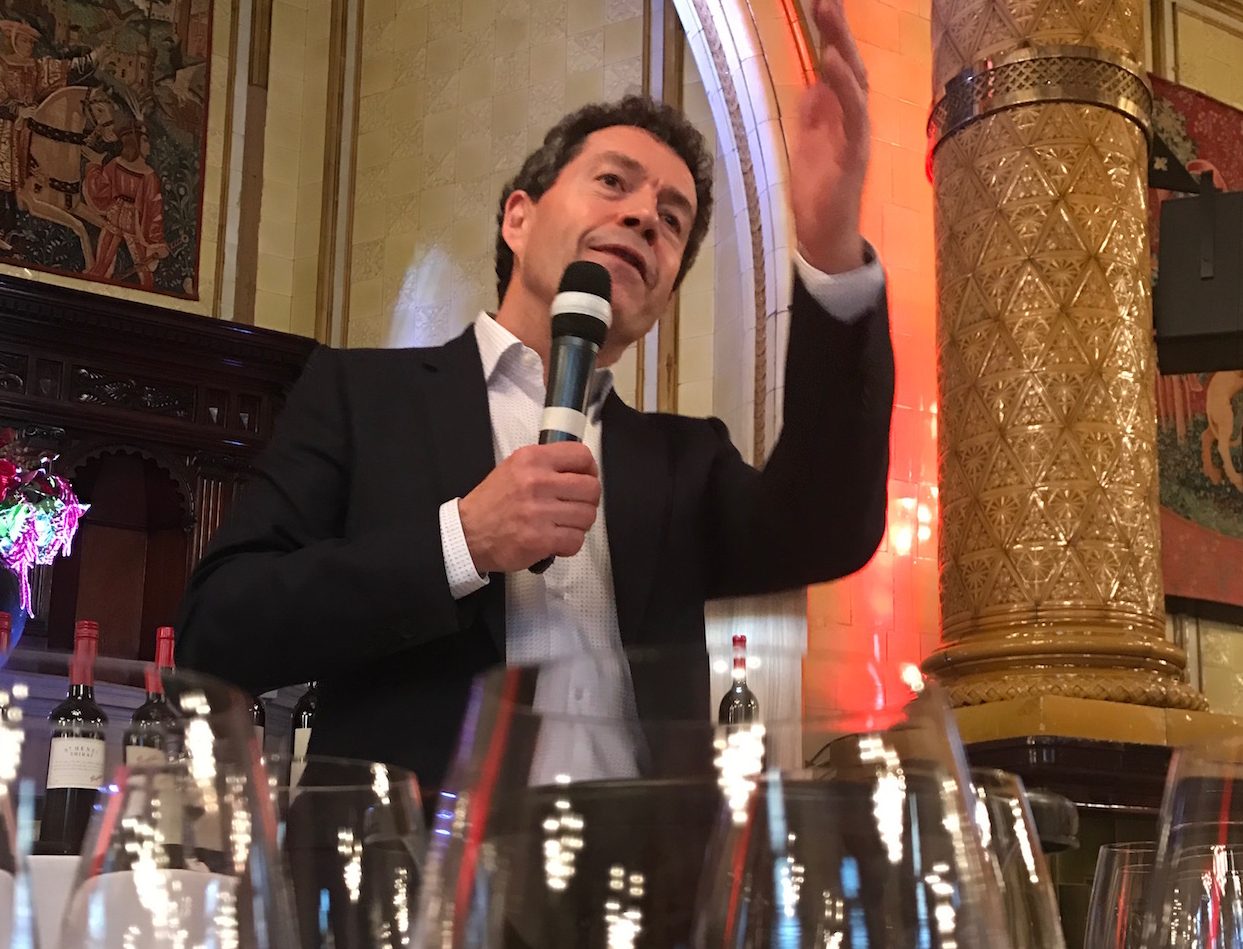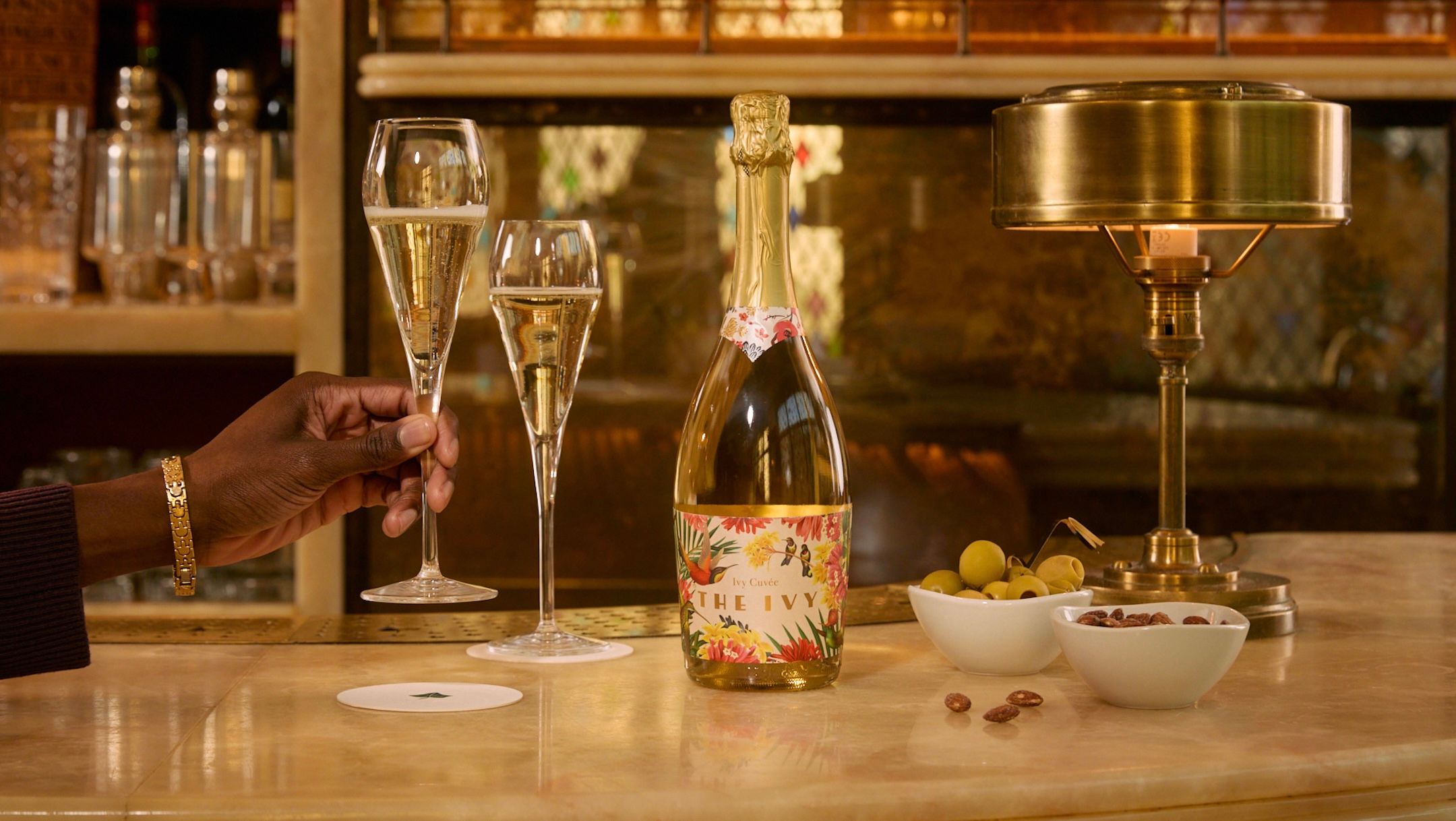Peter Gago has just received the Order of Australia, the highest accolade bestowed upon an Australian, for his contribution to winemaking. Here he points out the many changes in the new 2017 Penfolds Collection.
Like a stand-up comic trying out new material, pacing the floor of the grand banqueting hall in London’s Liberal Club mike in hand, recognising and answering the critics with first name terms, joshing with past employees, making little jokes and offering up fascinating insights about the new wines, Peter Gago is the consummate Aussie Head Winemaker come brand ambassador. There’s even a little bit of a vinuous evangelist in there too, as he introduces the world press to the new Penfolds Collection.
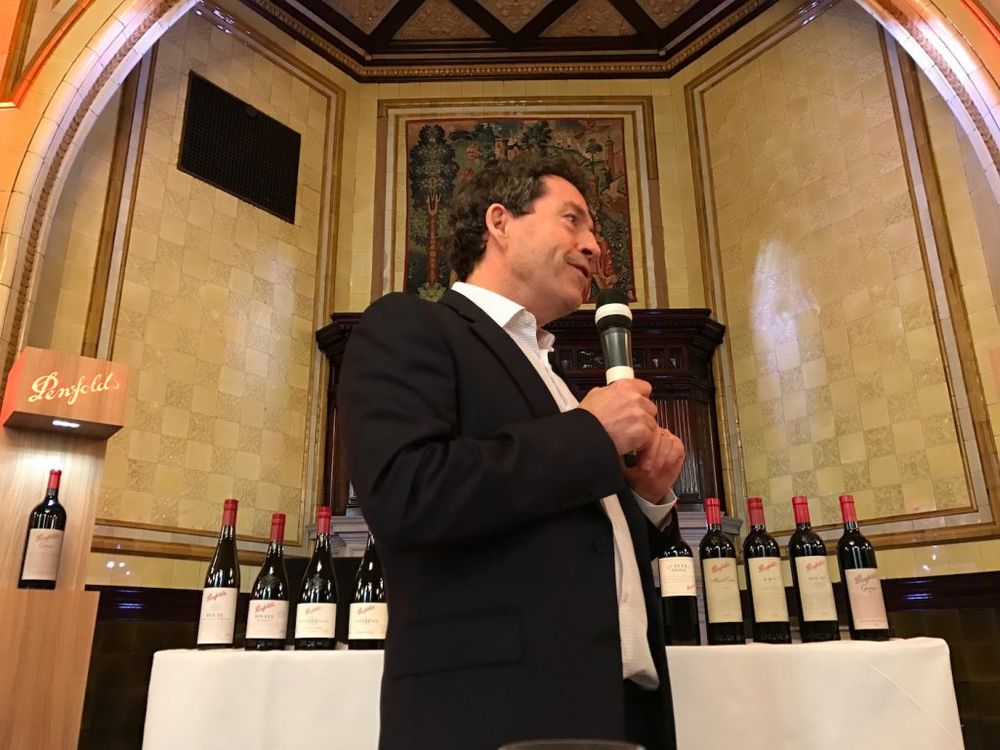
“I want to tell you a story,” Peter Gago, Liberal Club, London, September 2017
“We’ve got Knocky over there,” he smiles, pointing out Justin Knock MW who used to be at Wine Treasury.
He takes a question.
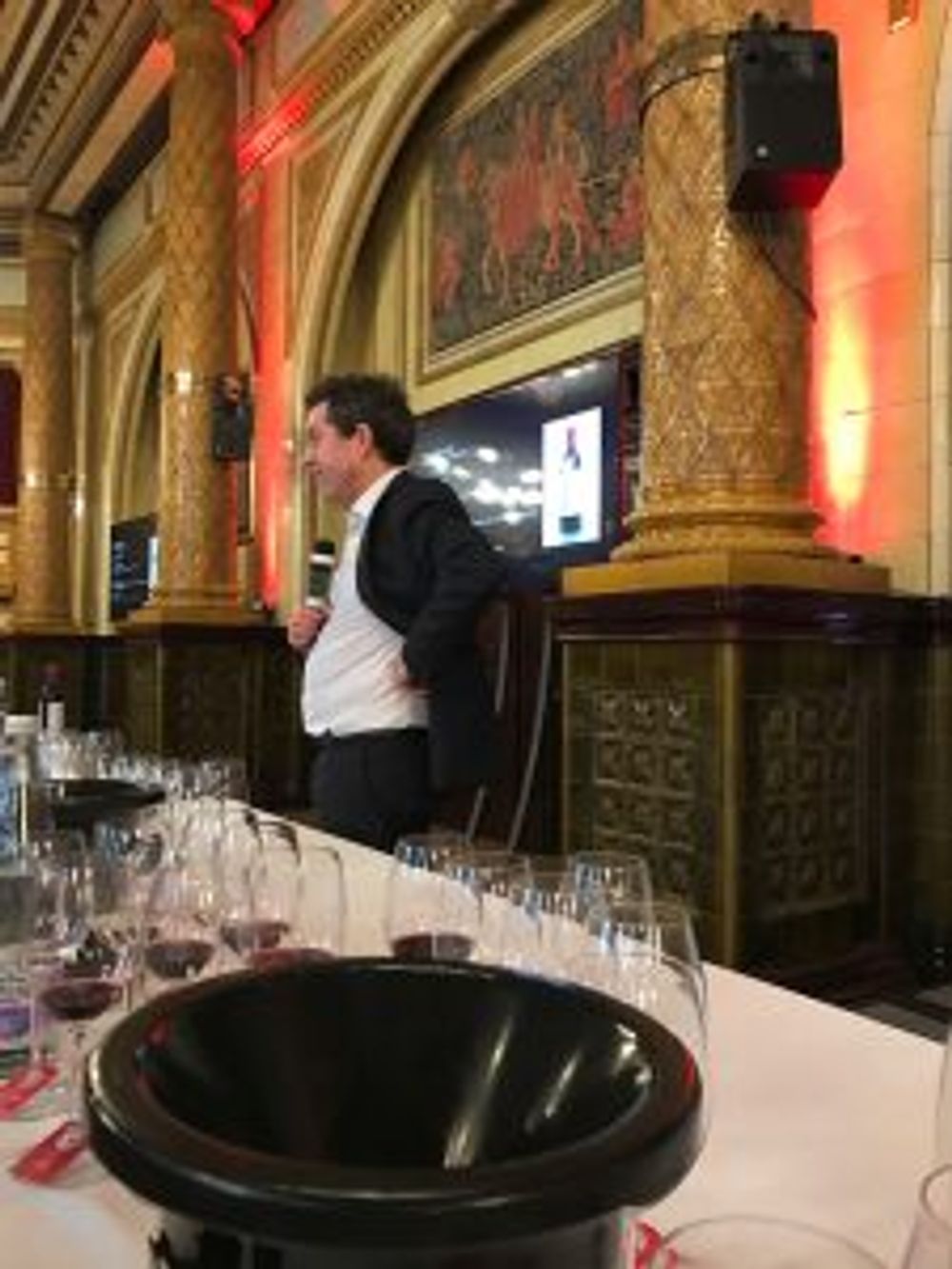
“How much? I can’t tell you that,” when asked how much Penfolds pay per ton of fruit for the Bin 389 he then gently goads, “you’re a writer… you might write that. Nice try though.”
There’s the old lines that Gago has doubtless trotted out at countless press previews and state functions about viticulture in the Antipodes – “It’s hard to unscramble those eggs when you’ve blended them” – and then there’s the new stuff – insights and delightful observations that the new vintages have inspired him with.

The ever-changing style of the Penfolds Collection whites
“So which one’s the Riesling then?” he asks rhetorically, moving his head back a foot as he surveys a line-up of the new white wines, in making a point about the reduction of new oak in the Chardonnays. He has a point, they all look pretty much the same with not a hint of yellow in sight.
The four whites are also bright, fresh and have strident acidity running through them all.
“It used to be golden and you could smell the oak,” he says about the Bin 311, Tumbarumba Chardonnay 2016, “but we press our Chardonnay not crush it. We use very little batonage, as we don’t want Chardonnay-flavoured white wine and the oak we do use is nine months seasoned French oak – the wine is unencumbered by new oak.”
The barrel fermentation does indeed allow better integration of oak and fruit, the wine is crisp, approachable, lean with fresh acidity.
“Show wines, they have their time in the sun, then tastes change,” he says as we taste the complex, lovely, zippy, citrus zest of the Reserve Bin A Adelaide Hills Chardonnay.
“There’s a little less artefact now in the wine, cordite, gunflint call it what you will – a lot less of that.”
“It is about using crisp fruit sourced from the coolest grapes possible and also we alter the wine by lees management and by barrel selection. Each 225 litre barrique is different, so we relegate the barriques in which this is more evident.”
“It’s not what goes in – it’s what comes out.”
The stylistic change of the whites to less oaky with more acidity, precision and focus is one he returns to throughout the tasting.
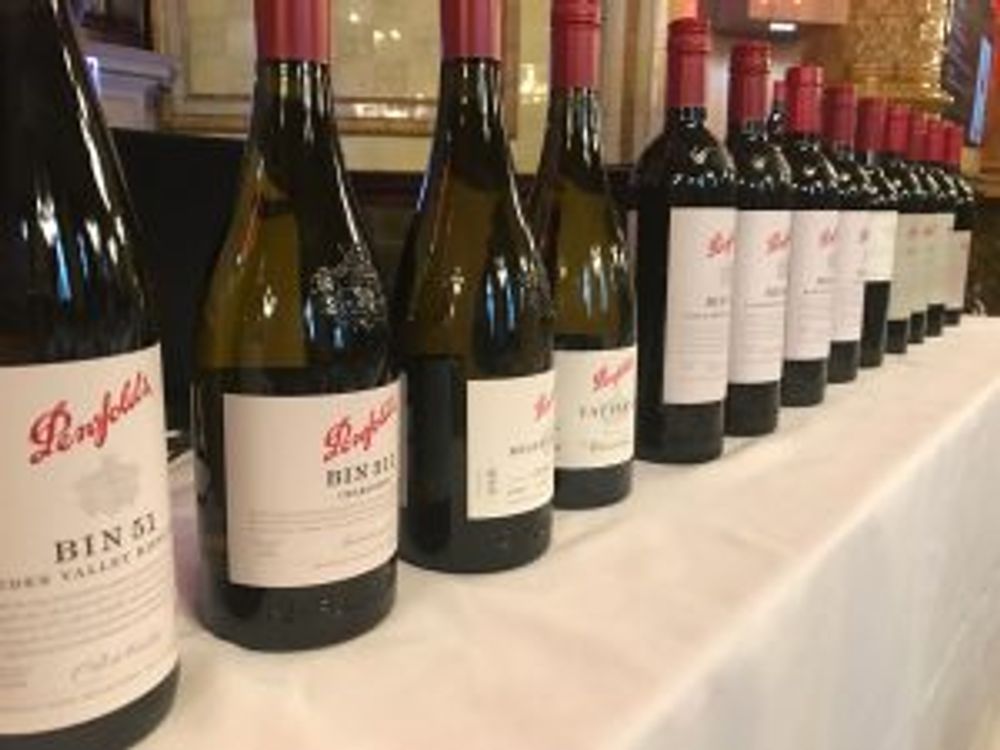
Of the ‘big boned’ Yattarna 2015 he points out that in this vintage there is 65% new oak whereas in 1997 it was 100% new oak. In 2004 there was no new oak at all used in the vinification.
“There is no formula just stylistic templates,” Gago says.
Penfolds have three main overall styles of winemaking – Single vineyard, Single region and Multi-region – Yattarna is an example of the latter with the fruit coming from Adelaide Hills and increasingly Tasmania which is giving the wine a leaner and crispier edge.
“There’s no indication that it’s a Tasmanian wine but some day it might be.
1995 was when we made the first Yattarna and 2006 was when the first Tasmanian fruit goes into blend. It’s the furthest South you can get – although there is one place further South, Antartica, and I just hope we don’t see grapes plated there… well not in our lifetime anyway… the South of England? never say never,” he says with a wry grin, as though growing grapes in either location is just as hair-brained to an Australian.
As for that Riesling that kicked off the tasting, Bin 51 Eden Valley Riesling 2016, it is very true of its place – flamboyant, fruity and clean – and a wine that is six months ahead of the Northern Hemisphere vintage-wise. Surprisingly there is only 0.9-1.1 residual sugar in the wine, the amount of fruit giving the impression of far greater.
Magic Estate and St Henri Shiraz shine amongst the reds
“So which wine was your favourite?” His asks me directly at the end of the tasting, the last drops of Grange 2013 still on my lips.
It’s like that Godawful moment when a comic picks you out of the crowd or when a schoolteacher (Gago used to teach chemistry) turns his beam onto you.
“Errr, The Magill Estate, sir,” I almost say.
The Magill Estate is where the Penfolds story began in 1844, of course, the vineyards now totally surrounded by Adelaide’s suburbs. This Magill Estate Shiraz 2015 is the last one that will be produced before the entire vineyard is replanted.
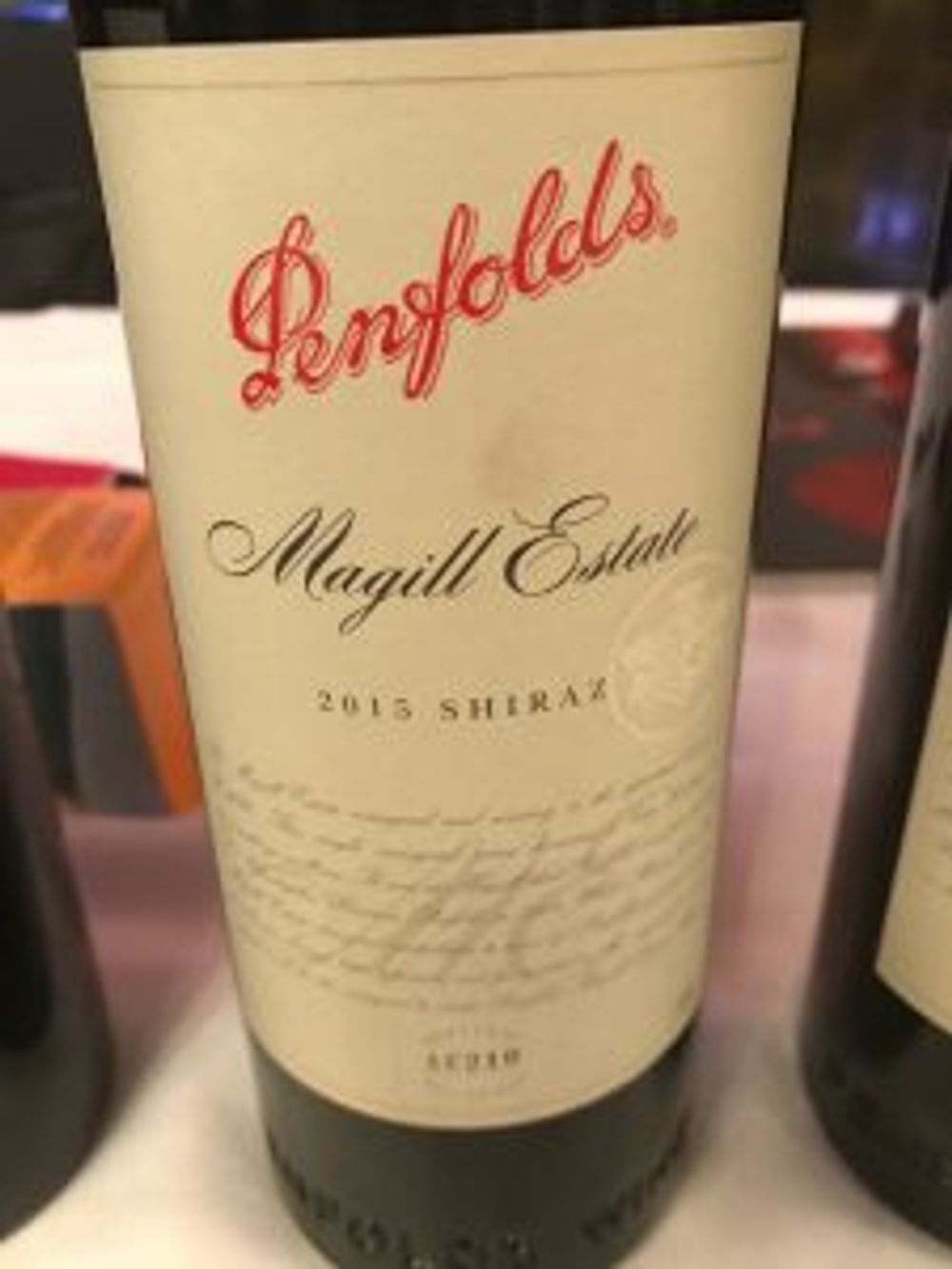
Although the wine normally has 50/50 French and American oak, this vintage is 70% French to 30% American.
“The Magill? Let me see,” Gago gets his glass, “It certainly makes a statement… a nice weave on the palate.”
The wine is fantastically spiced, textured with mouth-puckering tannin from the four days where the grapes have been left on skin for primary fermentation.
Another favourite is the St Henri Shiraz 2014 on the other end of the spectrum, a wine that you could almost call ‘feminine’ if it wasn’t Penfolds that we are talking about here. This is a delightful wine with a complex nose and palate, Rhoine-ish, with a nice balance between sweet notes and savoury
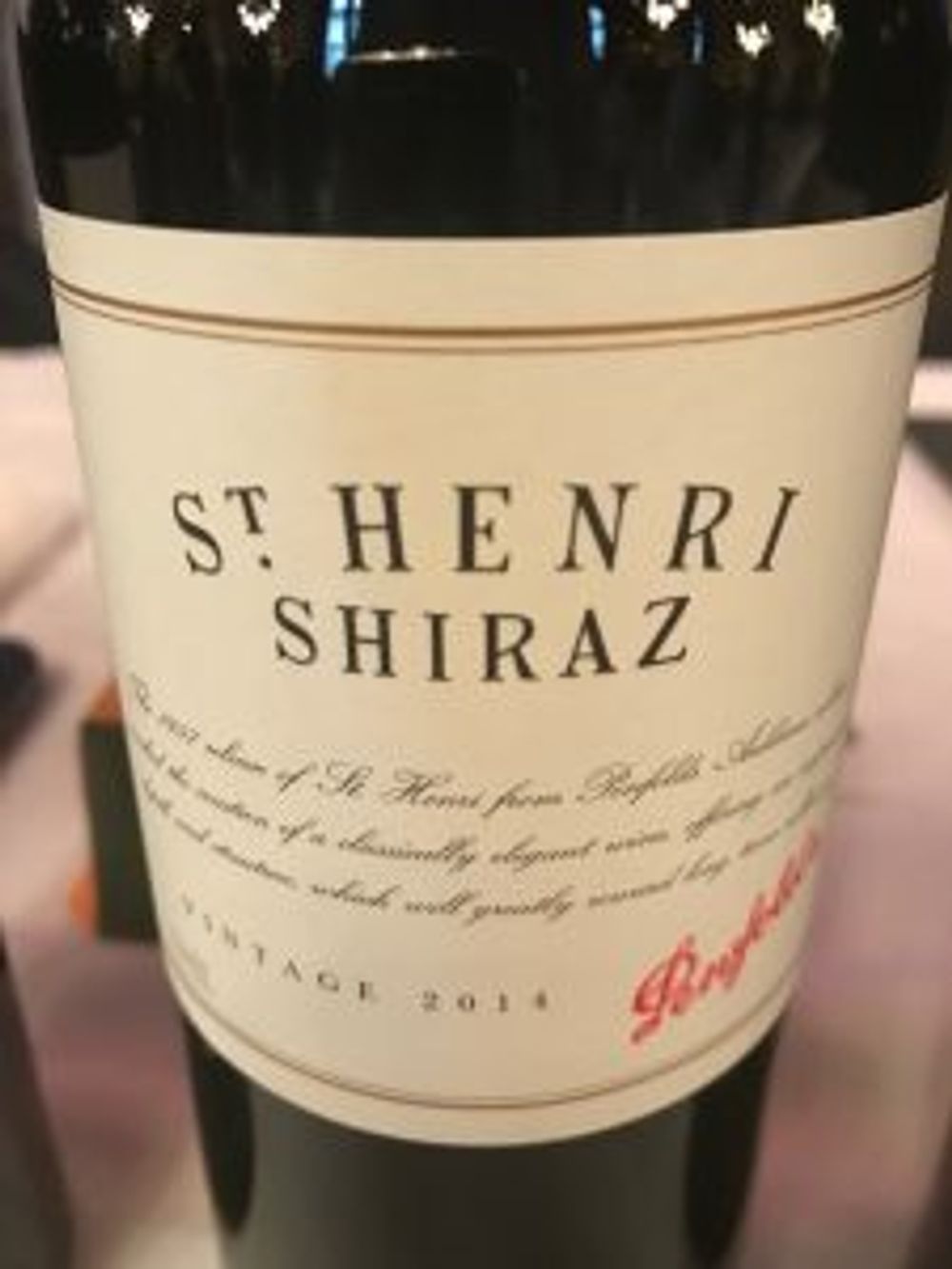
“We started making this wine in 1890 and we still use large 460 litre vats or foudres of old oak. It is always very deceptive, an odd performer, 1974 was awful a really wet vintage and yet the wine of the vintage was St Henri. In 1982 it should have been good but wasn’t,” says Gago.
“The great years of St Henri are 1958, 1962, 1971 (it usually embarrasses the 1971 Grange) 1990, 2010. The 2014? we wait to see.”
Penfolds reds all age well and need time in the cellar, although St Henri does age better than most.
The wine that consumers feel cellars the best is Bin 389 Cabernet Shiraz according to Wine Ark in 2016 that surveyed it as being Australia’s Most Collected Wine with Grange coming in second place. The difference is that Penfolds makes 10 times the amount of 389 as it does Grange. The grapes are “relegated material that doesn’t make RWT or Grange,” Gago says, and the fermentation in last year’s Grange barrels is both labour intensive and expensive.
“This is the 57th continuous releases and we can’t make enough to meet global demand.”
In order to push home the point about cellaring, Gago points out that the 1990 389 is “just starting to look very pretty.”
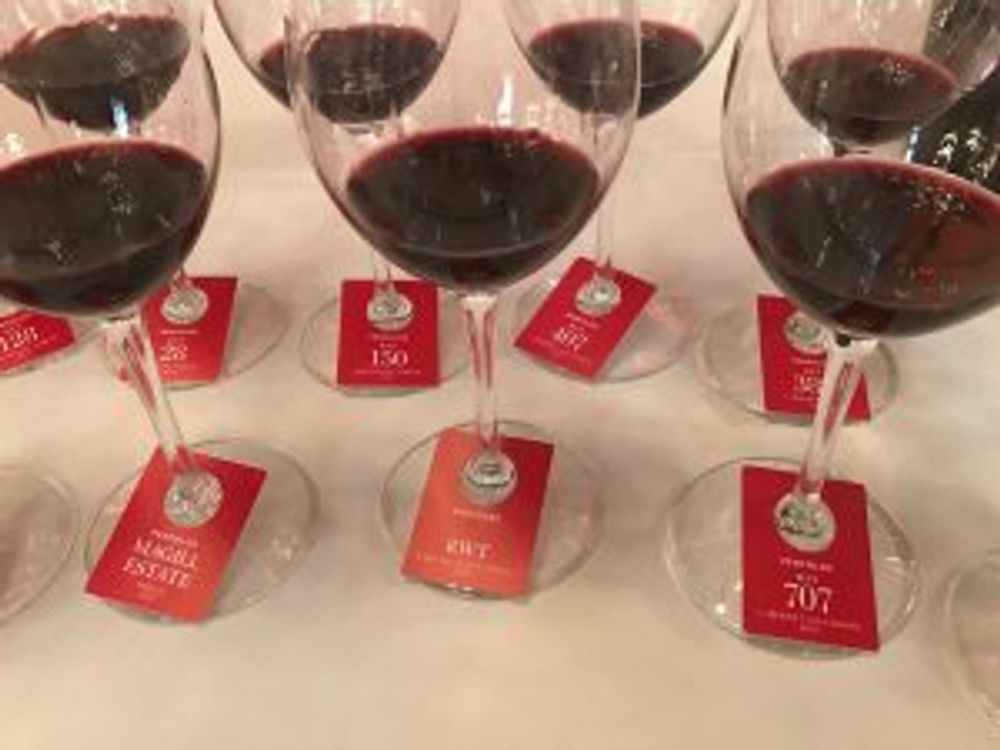
The wines and the observations come and go.
Of the beautifully balanced Bin 138 Barossa Valley Shiraz, Mataro, Grenache 2015 he reveals that the wines are vinified and matured separately
“We do this because we find that Grenache is as fickle as Pinot Noir – it’s to keep our options open. With Cabernet and Shiraz the degree of certainty about what we will get is close to a 1% margin. Grange and 707, for example, are fermented synergistically, but nor Grenache. It’s very easy to make Grenache, but hard to make good Grenache and it’s hard to unscramble those eggs when you’ve blended them”
Incidentally Penfolds is now doing a 2016 100% Grenache.
Also new in the Collection 2017 is the packaging of Bin 128 Coonawarra Shiraz 2015, which like many others in the range, now has an embossed bottle and different labelware. There is 10% more new French oak used.
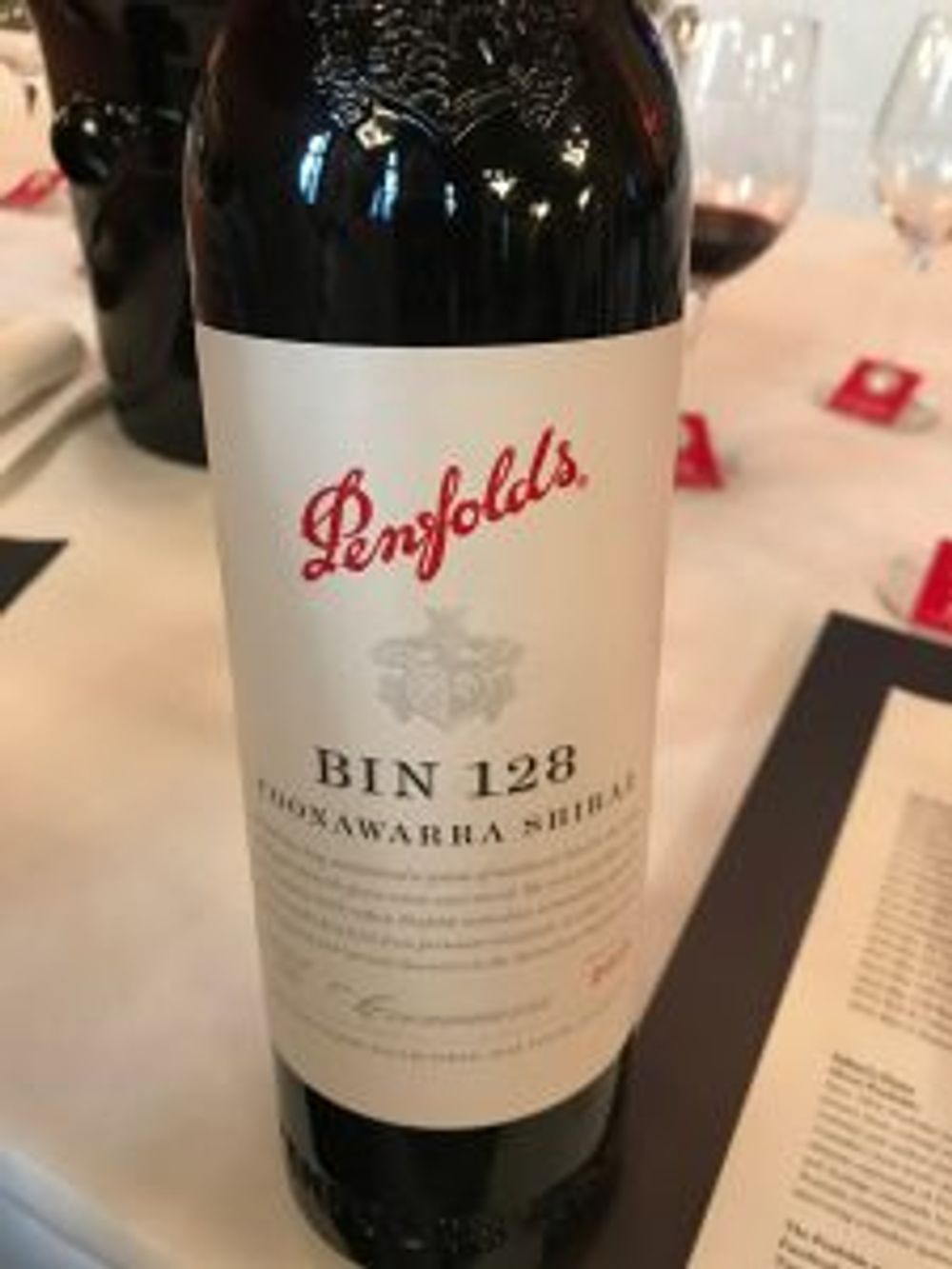
RWT Barossa Valley Shiraz 2015, is now called RWT Bin 798. Why?
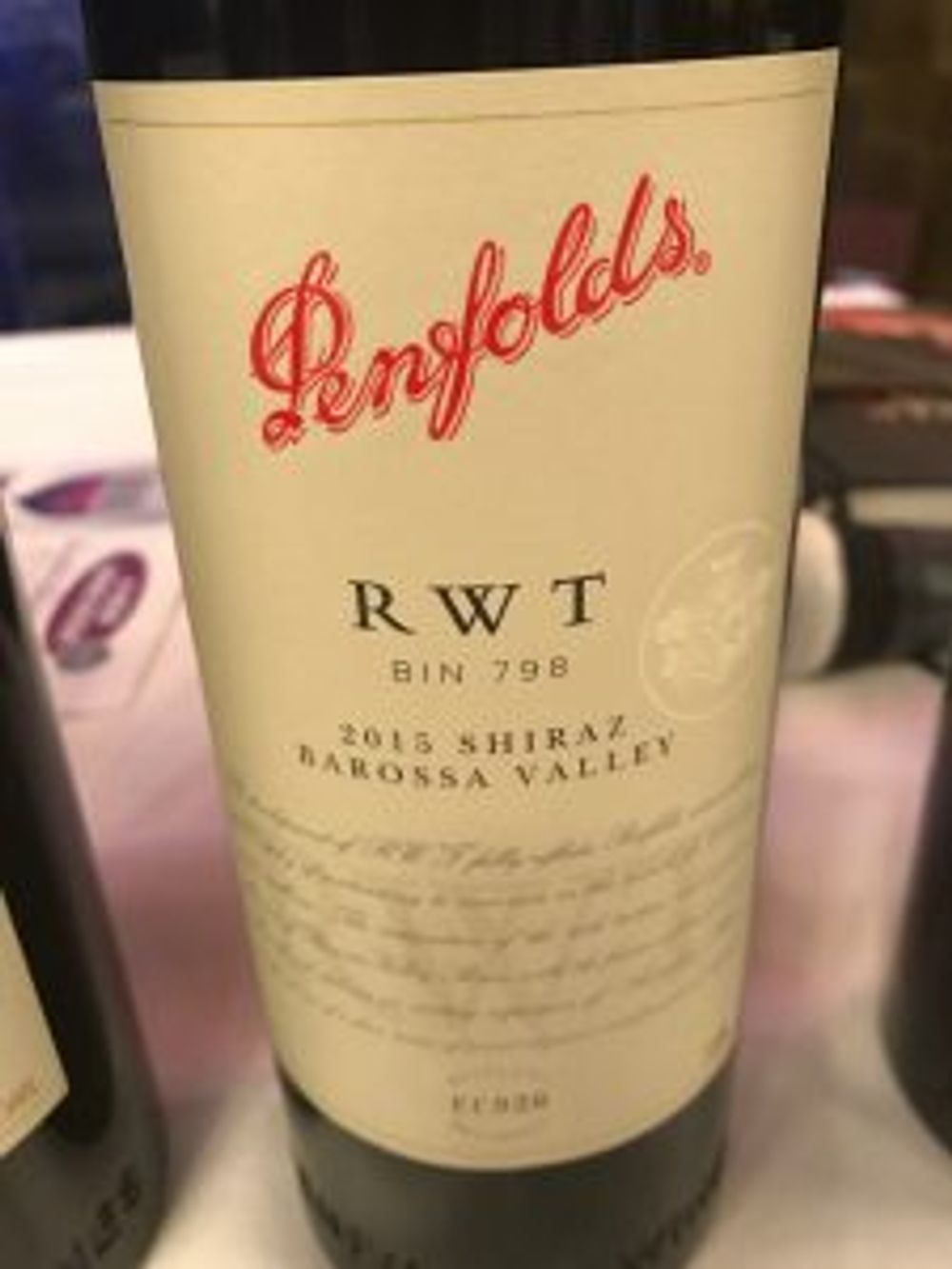
“See what your phone says when you key in RWT – 798 – “I am not going there…” Some people find that there are so many bin numbers that it’s confusing but I suppose numbers help a lot of people, think of the international market, and also it’s a short cut when referring to them.”
Of the RWT Gago says as he tastes. “Only one variety but just so many expressions, because of the soil types…. I think I prefer the Macgill. Just my observation, they’re normally incorrect by the way.”
We taste the approachable Bin 150 Marananga Shiraz 2015 with its big hit of juniper berries. The tannins he describes as “elongated, angular, millefeuille.”
The Bin 407 Cabernet Sauvignon 2015, Bin 707 Cabernet Sauvignon 2015 and Grange 2013 all follow.
With the 707 or the ‘Grange of our Cab’ as he calls it we learn that the only thing that changes year to year is the sourcing of the fruit. It is approachable but then mouth-puckeringly tannic “First sip or the second sip you think that’s OK not the third sip or the fourth sip.” Gago also mentions that in 2017 there was lots of rain on the South East so for this vintage quantities will be down “but the 389 and 407 will benefit.”
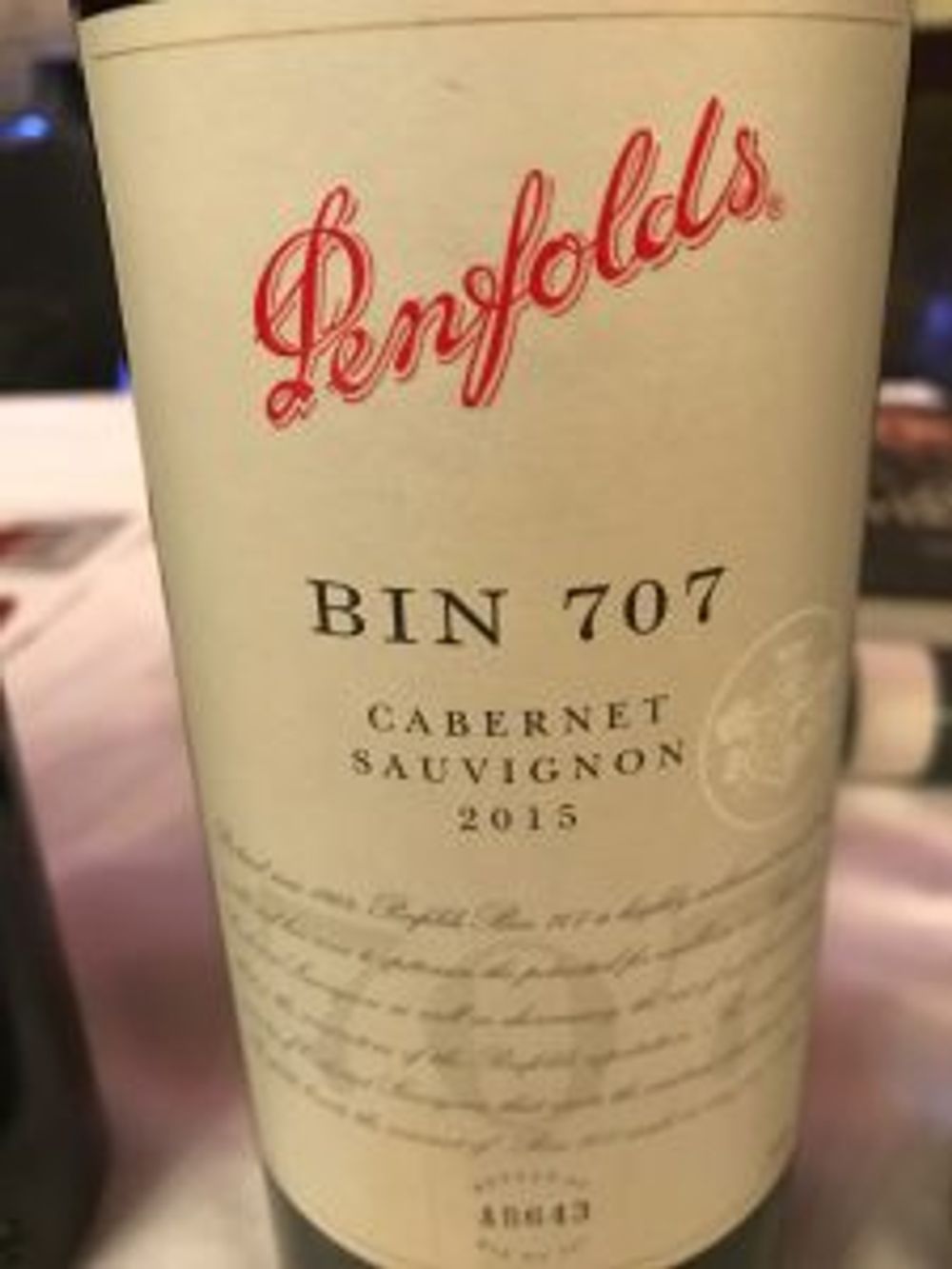
Of the Grange 2013 Gago says that it is more of a Grange than 2012 “It has that bit more attack, kirsch, more barrel ferment. There have been comparisons made with 2010 and 2012 – I make it half a point ahead of the 2012. It’s a different wine to 12, 10 is probably a bit ahead, maybe I’m wrong. With these wines it’s about seed content not skin contact.”
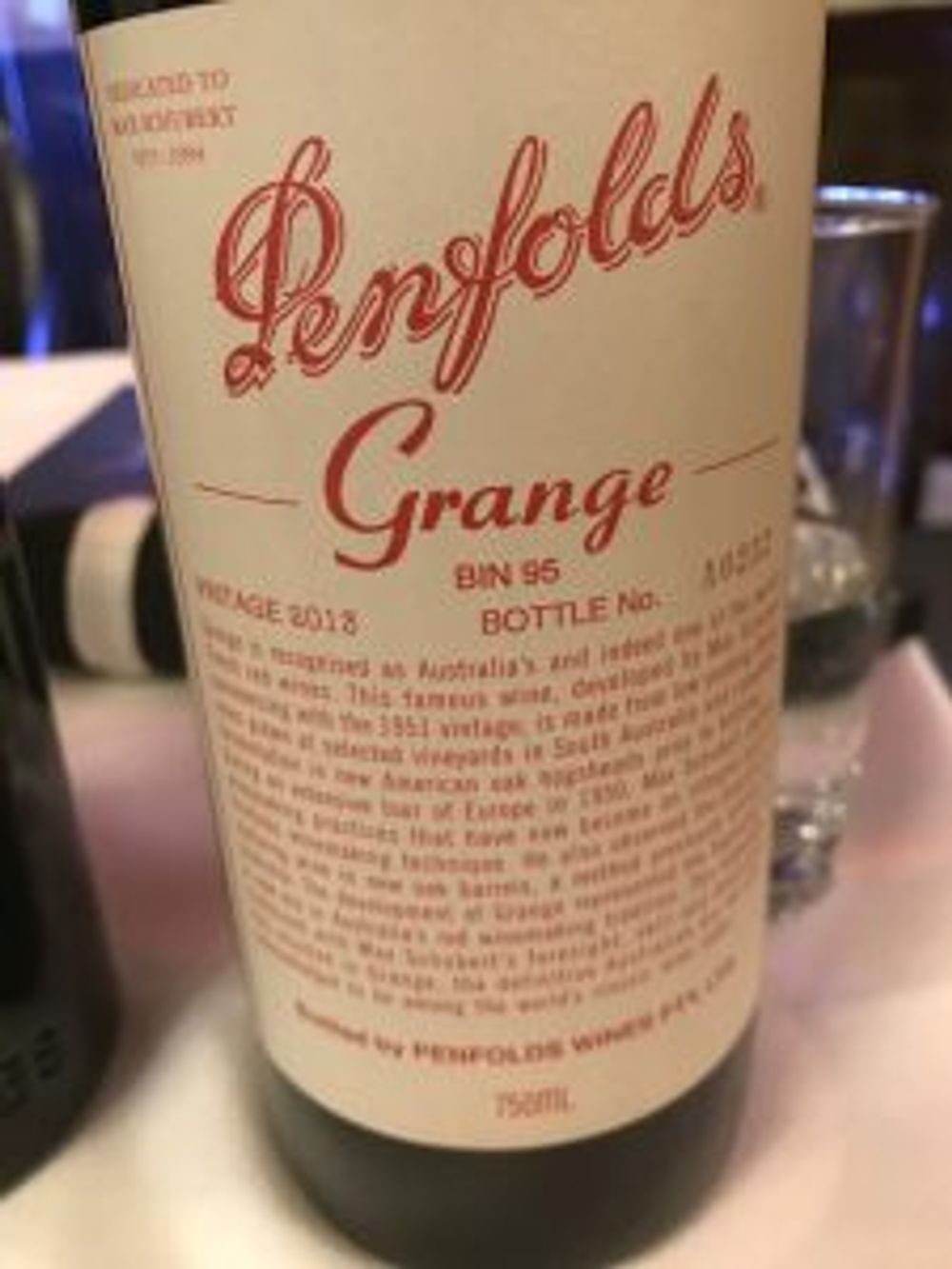
From where I am sitting the Grange 2013 has an ‘otherness’ that you only get with really great wine. The nose is surprisingly light and refined but then the palate is huge with amazing depth and a great integration and mix of flavours.”
A couple of other observations from the tasting was that when comparing Grange vintages Gago said “2004… I’ve drunk most of mine, 2010 I couldn’t afford too many of them,” which was amazing to hear.
The other was an observation about describing these wines without repeating yourself.
“You really should read the book,” he says on more than one occasion, holding up the extensive press pack, “we write it fresh every year, you might even find it a little amusing,” his eyes twinkle knowing he’s put a few gems of Aussie humour in there.
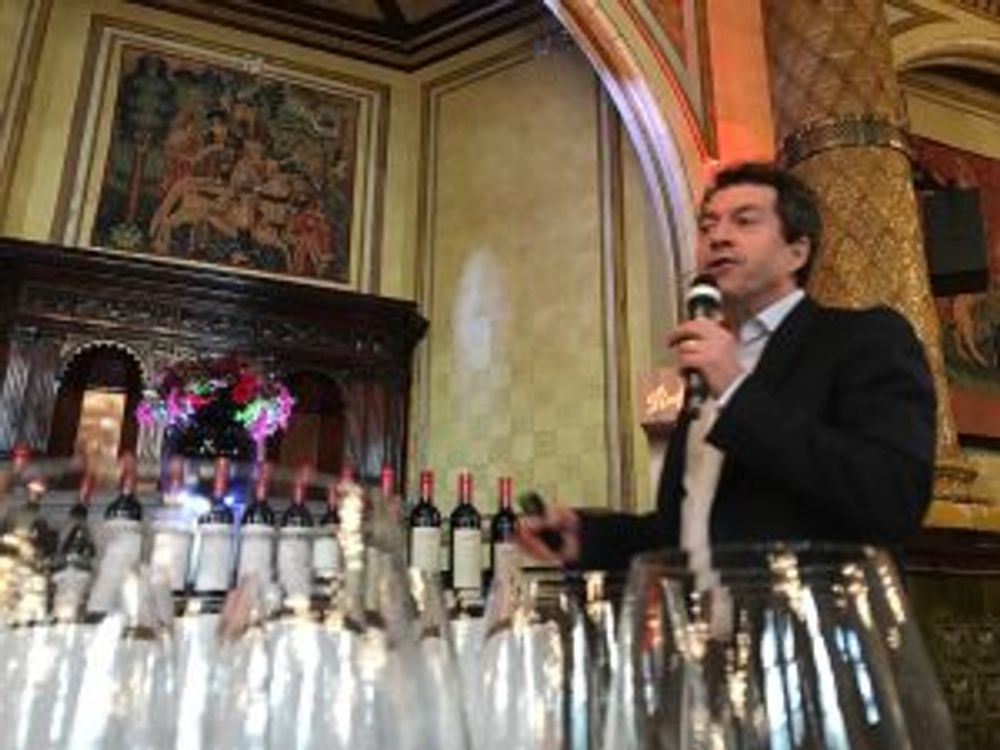
Then tellingly “You know it’s hard to write notes when the wines are so young – especially without writing fruity.” So true and well said.
So I leave you with part of his description of the Grange 2013 from the press book.
“A black palimpsest – black fruits, black liquorice, black pudding, black fig, black cardamom…Grantic chewy tannins linger and coat; oak all but fully concealed, submerged beneath a tannin/oak/acid/flavour tsunami…Fruits? Where to start in this entanglement? Time please.”
That boy should go on the stage.

